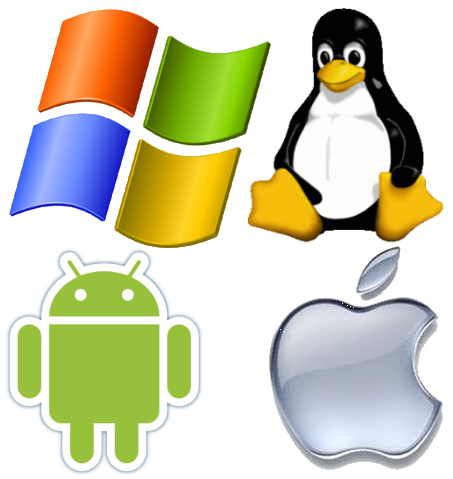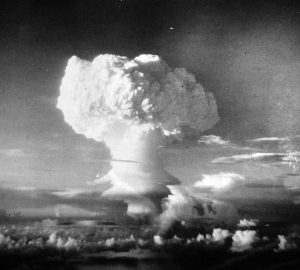# Open a command-line terminal (select Applications > Accessories > Terminal), and then type the following command to mount /dev/sdb1 at /media/newhd/.
You need to create a mount point using the mkdir command.
This will be the location from which you will access the /dev/sdb1 drive.
How do I mount all drives in Linux?
How to Mount and Unmount Filesystem / Partition in Linux (Mount/Umount Command Examples)
- Mount a CD-ROM.
- View All Mounts.
- Mount all the filesystem mentioned in /etc/fstab.
- Mount only a specific filesystem from /etc/fstab.
- View all mounted partitions of specific type.
- Mount a Floppy Disk.
- Bind mount points to a new directory.
How do I mount a drive?
How to assign a mount-point folder path to a drive with data
- Right-click the drive and select the Change Drive Letter and Paths option.
- Click Add.
- Select the “Mount in the following empty NTFS folder” option and click Browse.
- Select the folder you want to assign the mount-point.
- Click OK.
How do I mount Ubuntu?
Manually Mount a USB Drive
- Press Ctrl + Alt + T to run Terminal.
- Enter sudo mkdir /media/usb to create a mount point called usb.
- Enter sudo fdisk -l to look for the USB drive already plugged in, let’s say the drive you want to mount is /dev/sdb1 .
How do I add a second hard drive to Linux?
To achieve this, you need to perform three simple steps:
- 2.1 Create a mount point. sudo mkdir /hdd.
- 2.2 Edit /etc/fstab. Open /etc/fstab file with root permissions: sudo vim /etc/fstab. And add following to the end of the file: /dev/sdb1 /hdd ext4 defaults 0 0.
- 2.3 Mount partition. Last step and you’re done! sudo mount /hdd.
How do I find mount points in Linux?
df command – Shows the amount of disk space used and available on Linux file systems. du command – Display the amount of disk space used by the specified files and for each subdirectory. btrfs fi df /device/ – Show disk space usage information for a btrfs based mount point/file system.
What is fstab in Linux?
fstab is a system configuration file on Linux and other Unix-like operating systems that contains information about major filesystems on the system. It takes its name from file systems table, and it is located in the /etc directory.
What mount means sexually?
verb. you ride on top as in having sex. I want to get mounted with Hunter. See more words with the same meaning: sex, sexual intercourse.
How mount USB drive Linux?
How to Mount USB Drive in a Linux System?
- Step 1: Plug-in USB drive to your PC.
- Step 2 – Detecting USB Drive. After you plug in your USB device to your Linux system USB port, It will add new block device into /dev/ directory.
- Step 3 – Creating Mount Point.
- Step 4 – Delete a Directory in USB.
- Step 5 – Formatting the USB.
Will mounting a hard drive erase?
Simply mounting will not erase everything. As noted in previous posts mounting the HDD will not, in and of itself, erase the contents of the HDD. However, since you have serious directory corruption which cannot be repaired by Disk Utility you need to repair and replace the directory before it can be mounted.
How do I mount a network drive in Ubuntu?
Run below command so that your Ubuntu can resolve Windows computer name on a DHCP network. Mount (map) network drive: Now edit the fstab file to mount network share on start up. insert the username and password for accessing the remote share.
How do I mount a directory in Linux?
Mounting NFS
- Create a directory to serve as the mount point for the remote filesystem: sudo mkdir /media/nfs.
- Generally, you will want to mount the remote NFS directory automatically at boot. To do so open the /etc/fstab file with your text editor:
- Mount the NFS share by running the following command: sudo mount /mnt/nfs.
What is the use of mount command in Linux?
Linux mount and umount. The mount command mounts a storage device or filesystem, making it accessible and attaching it to an existing directory structure.
Which is better ext3 or ext4?
Ext4 was introduced in 2008 with Linux Kernel 2.6.19 to replace ext3 and overcomes its limitations. Supports huge individual file size and overall file system size. You can also mount an existing ext3 fs as ext4 fs (without having to upgrade it). In ext4, you also have the option of disabling the journaling feature.
How do I add a hard drive to vmware Linux?
VMware: Add disk to linux without rebooting the VM
- Open the virtual machine settings editor (VM > Settings) and click Add. …
- Click Hard Disk, then click Next.
- Select Create a New Virtual Disk, then click Next.
- Choose whether you want the virtual disk to be an IDE disk or a SCSI disk.
- Set the capacity for the new virtual disk.
- Finally, review the options you’ve selected.
Can Ubuntu read NTFS?
Ubuntu is capable of reading and writing files stored on Windows formatted partitions. These partitions are normally formatted with NTFS, but are sometimes formatted with FAT32. You will also see FAT16 on other devices. Ubuntu will show files and folders in NTFS/FAT32 filesystems which are hidden in Windows.
How do I mount a file system in Linux?
How to Mount and Unmount Filesystem in Linux
- Introduction. Mount is to access a filesystem in Linux.
- Use mount Command. Mostly, each Linux/Unix operating systems provides mount command.
- Unmount Filesystem. Use umount command to unmount any mounted filesystem on your system.
- Mount Disk on System Boot. You also required to mount disk on system boot.
What is a mount point in Linux?
A mount point is a directory (typically an empty one) in the currently accessible filesystem on which an additional filesystem is mounted (i.e., logically attached). A filesystem is a hierarchy of directories (also referred to as a directory tree) that is used to organize files on a computer system.
What is Showmount command Linux?
DESCRIPTION. showmount queries the mount daemon on a remote host for information about the state of the NFS server on that machine. With no options showmount lists the set of clients who are mounting from that host. The output from showmount is designed to appear as though it were processed through ”sort -u”.
How use fstab in Linux?
/etc/fstab file
- The /etc/fstab file is a system configuration file that contains all available disks, disk partitions and their options.
- The /etc/fstab file is used by the mount command, which reads the file to determine which options should be used when mounting the specified device.
- Here is a sample /etc/fstab file:
What is UUID in Linux?
UUID stands for Universally Unique IDentifier and it is used in Linux to identify disk in the /etc/fstab file. This way, the order of the disk in the motherboard can be changed, not affecting the mount point they will have.
What does fsck do in Linux?
fsck. The system utility fsck (file system consistency check) is a tool for checking the consistency of a file system in Unix and Unix-like operating systems, such as Linux, macOS, and FreeBSD. A similar command, CHKDSK, exists in Microsoft Windows and (its ancestor) MS-DOS.
Why mounting is needed in Linux?
Because /dev/cdrom is a device, whereas /media/cdrom is a filesystem. You need to mount the former on the latter in order to access the files on the CD-ROM. Your operating system is already automatically mounting the root and user filesystems from your physical hard disk device, when you boot your computer.
What is an unmounted drive?
What does it mean to mount or unmount a disk image? Answer: Mounting a hard disk makes it accessible by the computer. This is a software process that enables the operating system to read and write data to the disk. Most disks are automatically mounted by the operating system when they are connected.
What is a NAS mount?
Network-attached storage (NAS) is a file-level (as opposed to block-level) computer data storage server connected to a computer network providing data access to a heterogeneous group of clients. NAS is specialized for serving files either by its hardware, software, or configuration.
Photo in the article by “Wikimedia Commons” https://commons.wikimedia.org/wiki/File:Detonation_of_a_Thermo-Nuclear_Device_in_the_South_Pacific.jpg

